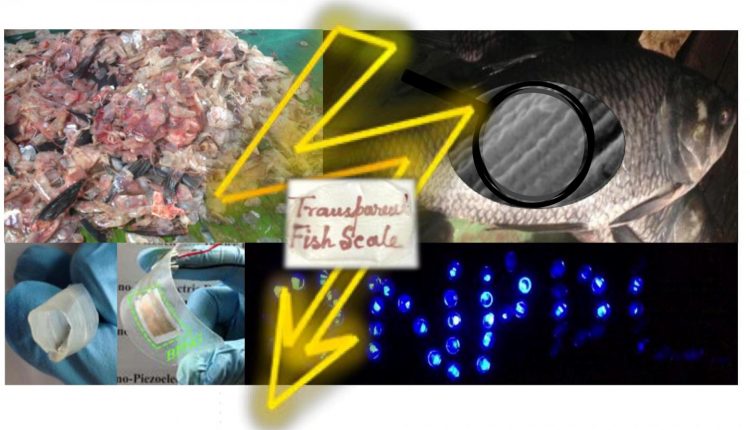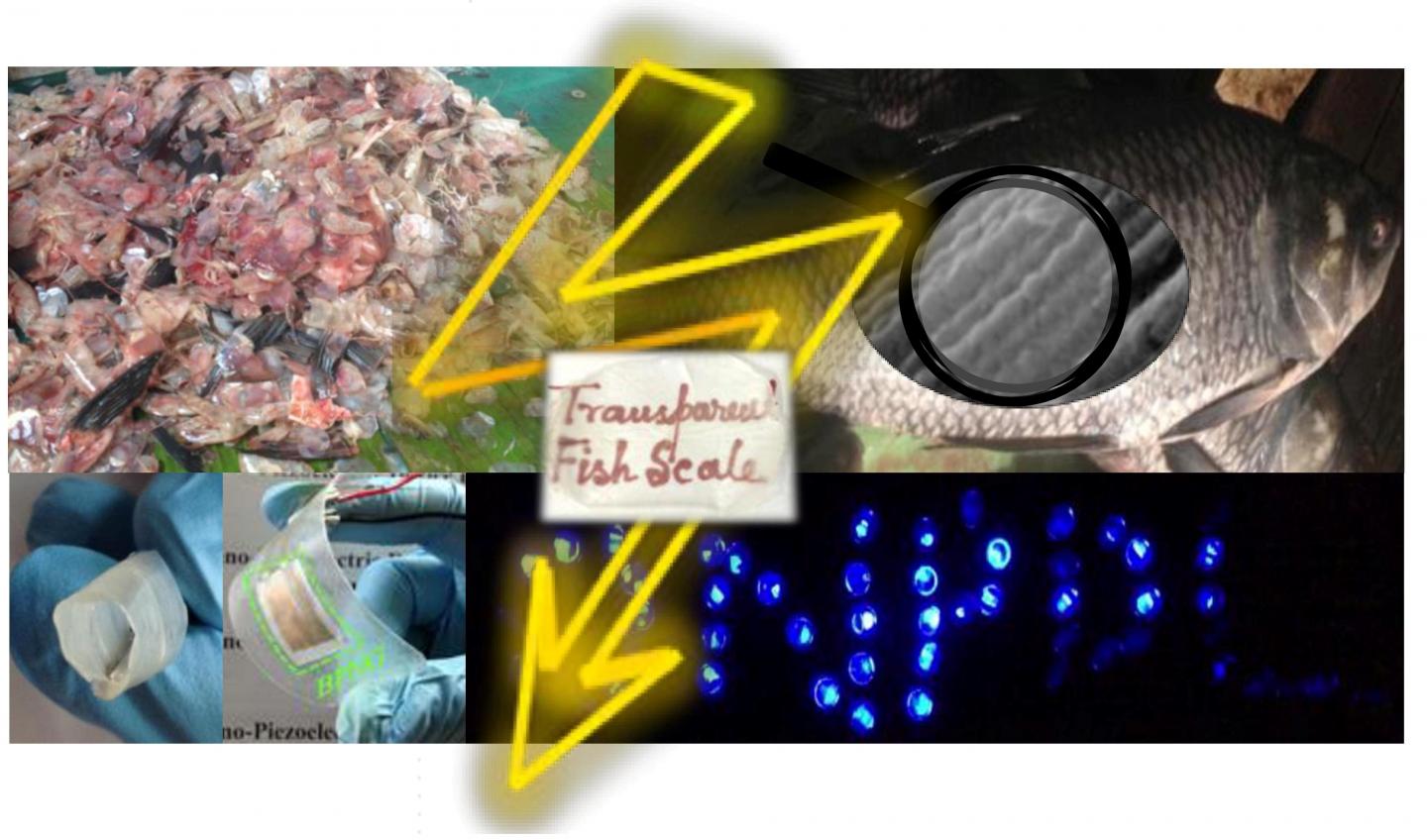
Using fish scales to create self-powered electronics
Fish is one of the oldest delicacies in the world and in India especially, large quantities of fish are consumed on a daily basis. These large waves of fish consumption actually generate a great deal of fish “biowaste” materials.
A team of researchers at Jadavpur University in Koltata, India decided it wanted to do something with all of this biowaste, so it explored recycling the fish byproducts into an energy harvester for self-powered electronics.

The idea behind the work is fairly simple. According to the researchers, fish scales contain collagen fibers that possess a piezoelectric property, which means that an electric charge is generated in response to applying a mechanical stress. By harnessing this property they found they could fabricate a bio-piezoelectric nanogenerator.
In order to do so, the researchers first “collected biowaste in the form of hard, raw fish scales from a fish processing market, and then used a demineralization process to make them transparent and flexible,” said Dipankar Mandal, assistant professor, Organic Nano-Piezoelectric Device Laboratory, Department of Physics, at Jadavpur University.
The collagens within the processed fish scales served as an active piezoelectric element and, using them, the team was able to create a nanogenerator — or energy harvester —with electrodes on both sides, and then laminate it.
While it’s well known that a single collagen nanofiber exhibits piezoelectricity, until now no one had attempted to focus on hierarchically organizing the collagen nanofibrils within the natural fish scales.
“We wanted to explore what happens to the piezoelectric yield when a bunch of collagen nanofibrils are hierarchically well aligned and self-assembled in the fish scales,” said Mandal. “And we discovered that the piezoelectricity of the fish scale collagen is quite large (~5 pC/N), which we were able to confirm via direct measurement.”
This is the first known demonstration of the direct piezoelectric effect of fish scales from electricity generated by a bio-piezoelectric nanogenerator under mechanical stimuli — without the need for any post-electrical poling treatments.
In testing, the researchers found that the generator can use a variety of ambient mechanical energies, including body movements, machine and sound vibrations, and wind flow. Even repeatedly touching the bio-piezoelectric nanogenerator with a finger can turn on more than 50 blue LEDs.
“We expect our work to greatly impact the field of self-powered flexible electronics,” said Mandal. “To date, despite several extraordinary efforts, no one else has been able to make a biodegradable energy harvester in a cost-effective, single-step process.”
Potential applications include transparent electronics, biocompatible and biodegradable electronics, edible electronics, self-powered implantable medical devices, surgeries, e-healthcare monitoring, as well as in vitro and in vivo diagnostics.
“In the future, our goal is to implant a bio-piezoelectric nanogenerator into a heart for pacemaker devices, where it will continuously generate power from heartbeats for the device’s operation,” Mandal added. “Then it will degrade when no longer needed. Since heart tissue is also composed of collagen, our bio-piezoelectric nanogenerator is expected to be very compatible with the heart.”
The team mostly envisions a great deal of applications in the medical field for targeted drug delivery and hope to eventually engineer an ingestible electronic device composed of nontoxic materials that are useful for a wide range of diagnostic and therapeutic applications.
Story via American Institute of Physics.

Comments are closed, but trackbacks and pingbacks are open.